"Nouveau Réalisme"



Daniel Spoerri, Jürgen Brodwolf

GALERIE HENZE & KETTERERKirchstrasse 26 CH 3114 Wichtrach/Bern, switzerland Tel.:+41/31/781 06 01 Fax:+41/31/781 07 22 email |
21st May > 27th August 2016
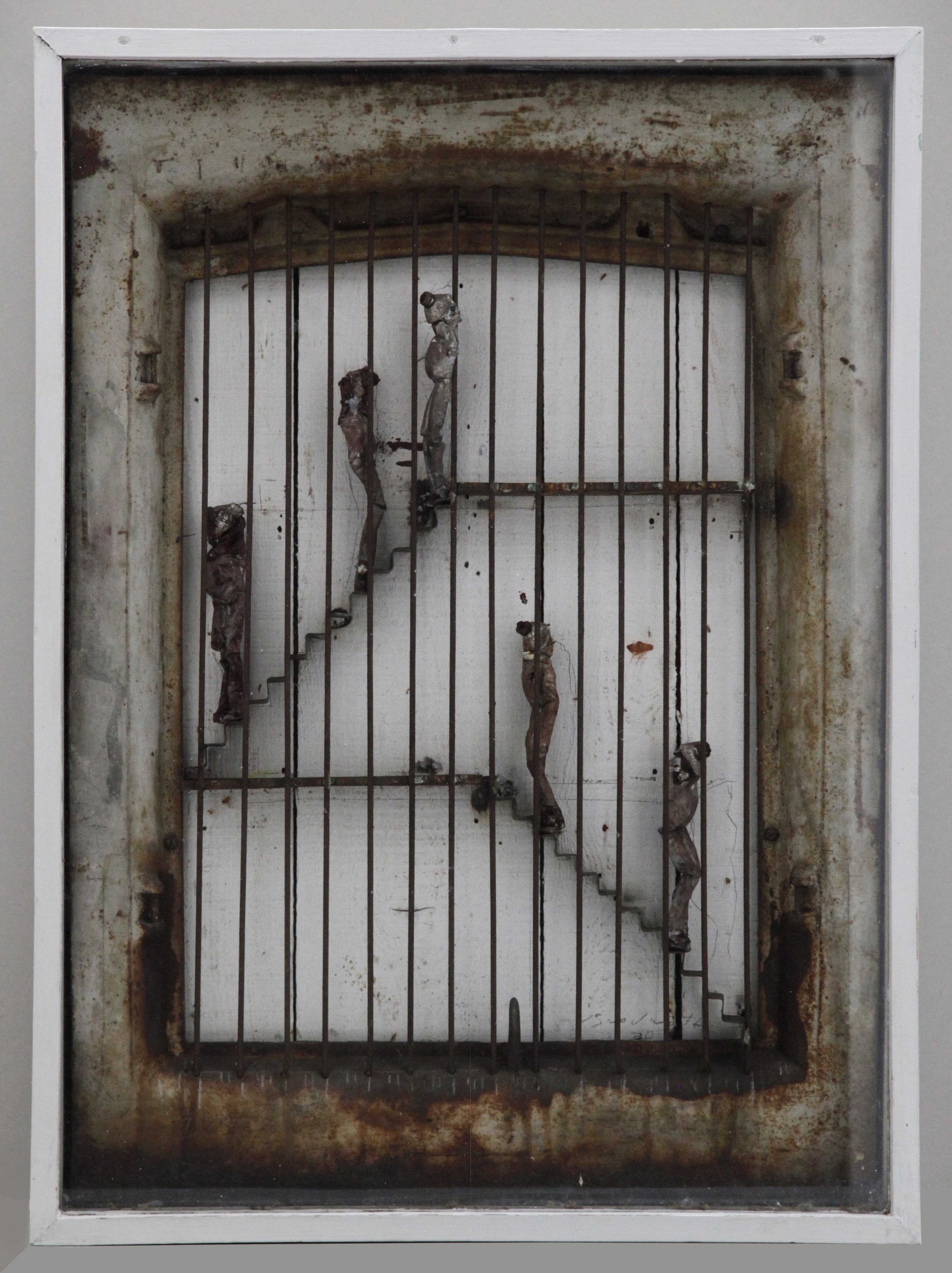 Jürgen Brodwolf, Treppensteiger. Figurine 1970. Holoczek-Blume 90. 84,5 x 62 x 12,5 cm. Obj. Id. 80027 |
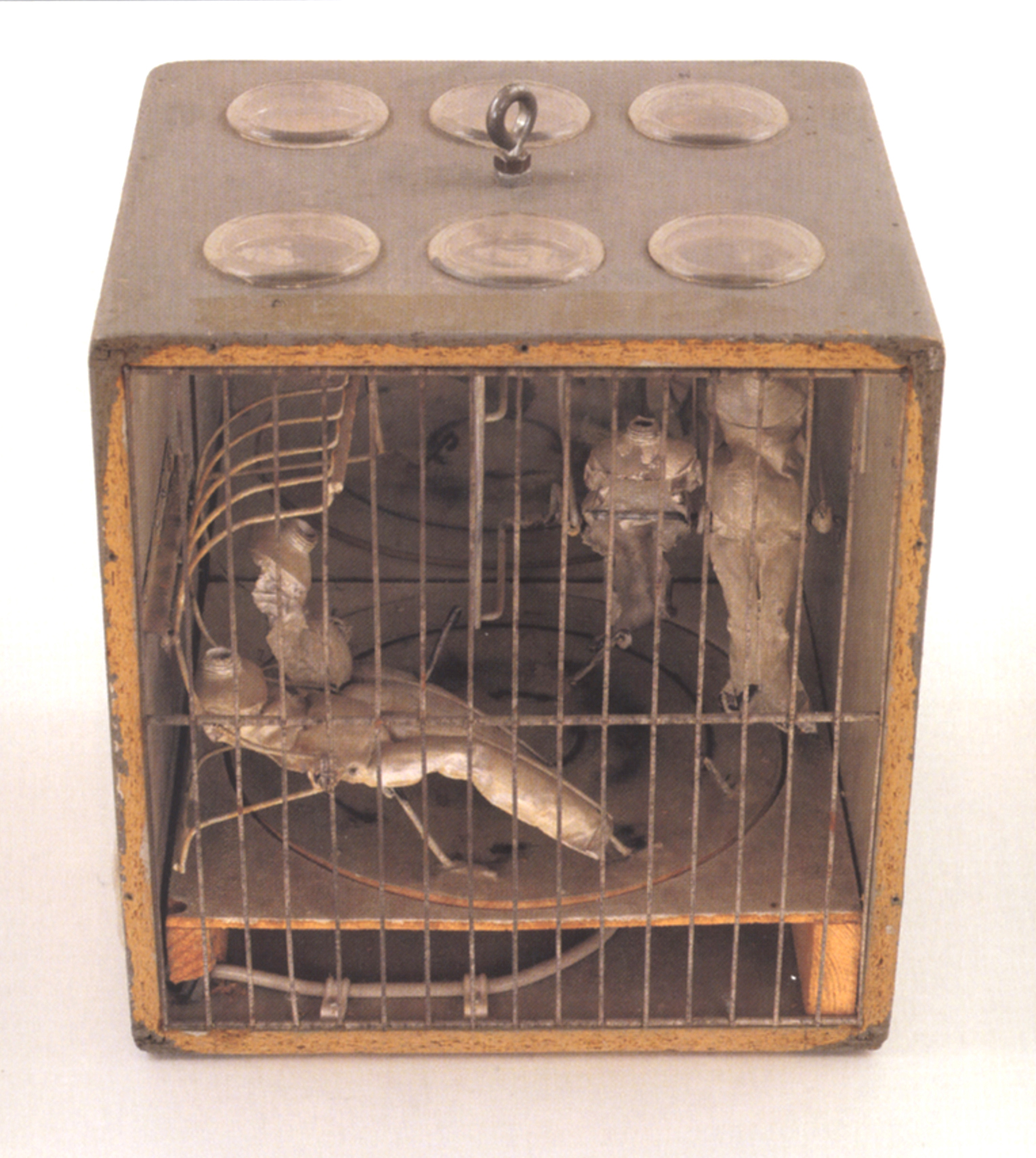 Jürgen Brodwolf, Ertüchtigungsraum. Elektromagnetischer Guckkasten 1973. Holeczek-Blume 230. 32 x 30 x 30 cm. Obj. Id. 66339 |
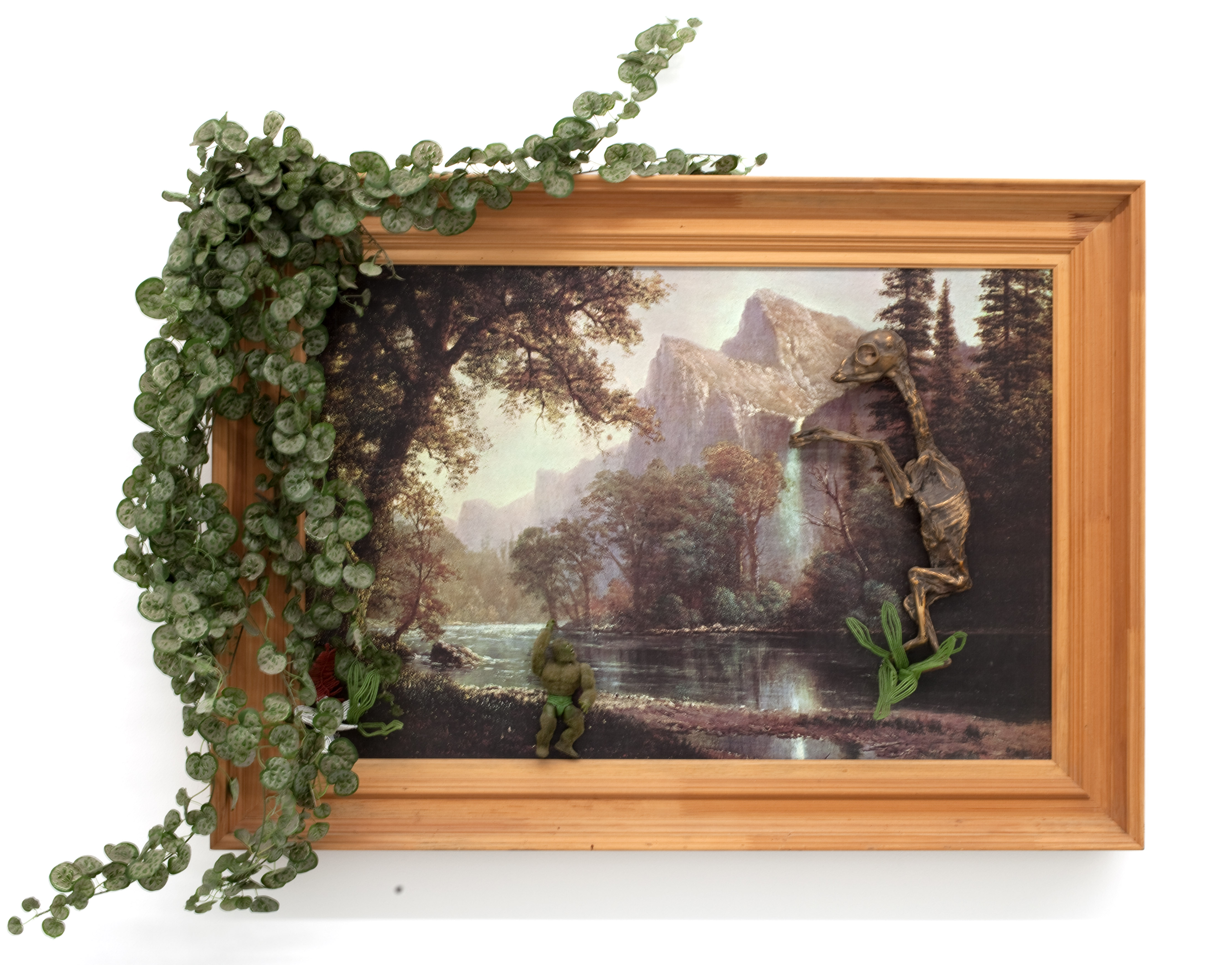 Daniel Spoerri, Détrompe-l'oeil. Hintergrundbilder. Dino in Flusslandschaft und Gebirge. Assemblage 1988. 96 x 120 17 cm. Obj. Id. 74119 |
Prior to modernism, the purpose of art was to depict the human being and the world, all in the service of the nobility and the Church. The beginning of modernism marked the development of autonomous art and its freedom from purpose. Since then, however, art has been faced with the question as to what it should be and what it should represent and, by the same token, what reality is, especially its own reality. If reality is what results from the relationships of human beings to one another and to their environment, then art, too, is a product of these relationships. Art that calls itself in question makes these relationships visible and thus represents a provocation, for it lays bare the power structures both in society and in the field of art. At the same time, however, art breaks free from these structures and proves its autonomy. Art as counter-reality calls in question the accepted relationships of reality, breaks them down and considers them in terms of their actual possibilities. It opens and goes new ways and may thus be seen as the practice of freedom
The realism of Gustave Courbet no longer depicts members of the nobility but rather the hard-working “Stonebreakers” as the real foundation of the world, a reality hitherto suppressed by the art world. Instead of an idealized female nude, Manet's “Olympia” depicts a real prostitute and triggers a scandal. The Impressionists analysed the reality of the painting as the product of seeing: upon closer scrutiny the painting dissolves into individual dots and strokes; viewed from a distance, the dots and strokes merge into recognizable shapes. Cubism exposed the three-dimensional picture space and the human figure as a two-dimensional illusion. Abstraction is, among other things, a product of the recognition that what we perceive as reality is nothing in comparison with what we cannot perceive ourselves but know that it is there thanks to science and technology or we are esoterically persuaded that it is there. Art Informel, the abstraction of the 1950s, was no longer about reality in the painting but about the reality of the painting itself, in other words, the very act of painting and the materials used, i.e. paint and canvas. Nouveau Réalisme, for its part, was neither the representation nor the creation of reality but showed what reality itself brought forth: Daniel Spoerri glued everything that was left over after a meal onto the table, tilted the table top into its vertical position and hung it on the wall. All of these examples, while belonging to different art-historical periods, seek to answer the question of what art is, and, in so doing, open our eyes to what reality is.
It was in 1960 that Spoerri first fixed these objects and left-overs on the table of his hotel room in Paris. Later he arranged eating events – in his own restaurant and on special occasions – where at some time during the evening the trap would snap shut, so to speak, and everybody had to stop eating and leave things just as they were so that they could be fixed and preserved on the tabletops. The forthcoming exhibition will be showing the “Snare Pictures” from the “Sevilla Series”, all of which were made in this way. These “Snare Pictures” have less of an affinity with Duchamp's Readymades (e.g. the urinal or the bottle rack, which according to Duchamp did not become works of art until they were placed in the context of an exhibition, i.e. museum) than with John Cage's musical composition 4:33 min: a pianist plays not a single note for the duration of 4 minutes 33 seconds. Thus Cage opens a time frame, within which attention is drawn to the sounds outside and inside the concert hall, above all those of the listening public and the individual listener. This time frame may be likened to an audible snare painting that makes us aware, perhaps for the first time ever, of the infinitude of noises and sounds, not only within the given time frame but also in the reality that exists beyond it. Here Cage also makes us aware of one of the fundamental aspects of art: whatever is there of its own accord, whatever exists innately, must yield to, and make room for, whatever is to be shown. By not playing the piano, the pianist reveals the infinitude of what is otherwise drowned or eliminated by his playing. It is in this sense that there is no difference between art and everyday reality. Here, too, that which is there of its own accord is ignored and only what serves the actual intention is seen and shown, e.g. the hammer that is needed to hang a picture on the wall. Making a tabula rasa in this way leads in music to (an assumed) silence and in art to the White Paintings of Robert Rauschenberg. Spoerri, on the other hand, does not make such a clean sweep of things but rather captures the reality of what was taking place on the table at a certain moment. Those who take part in Spoerri's eating events and do not know when the trap is going to snap shut will have much the same experience as the listeners of Cage's “4:33 min”: they will be conscious not only of every moment, with its infinitely many fortuitous details, but also of their own creative involvement.
Another strategy implemented by Spoerri to capture reality is the collection of objects and their combination in the form of collages. Here Spoerri responds to the consumer society that evolved with the economic upswing towards the end of the 1950s. New products featuring a completely new commodity aesthetic changed the entire everyday world virtually overnight. Old, now obsolete commodities fell victim to the new throw-away society. A whole world disappeared. While the exponents of Pop Art enthusiastically welcomed the new world of merchandising and advertising, Spoerri set about collecting old, discarded commodities on rubbish dumps and flea markets. In collecting society's unwanted, discarded, rejected objects, objects that had outlived their useful life and no longer fitted into the new order of things, Spoerri makes us aware of our cultural system with its mechanisms of devaluation and dissolution: “We must show reality itself. Not from its best side, but the muck, the waste, the uncleared table.” When working in Paris as a tourist guide, it was not the Eiffel Tower that Spoerri showed, but the slums.
Spoerri combines his found objects in collages, creating an absurd juxtaposition of commonplace and not so common things from various times and places, all of them together bringing forth reality in one form or another. The Surrealist notion of the “chance meeting on a dissecting-table of a sewing-machine and an umbrella” finds expression in these collages just as much as the concept of a Romantic collection of fragments and the post-modern idea of the parallelism of time and space of all things. With these collages, too, Spoerri exposes every order and every system as arbitrary, random entities, especially those of our museums with their strict separation between different domains. Spoerri's collections and collages are more reminiscent of the predecessors of the museum, namely the cabinets of wonders and curiosities in which works of art stood next to, and on a par with, globes and telescopes, stuffed animals and preserved freaks, all of them making an equal contribution to the visitor's amazement over the diversity of the world.
On the one hand, the work of Jürgen Brodwolf is contemporaneous with New Figuration, a movement that had turned its back on abstraction and re-embraced figuration. Brodwolf, too, had been an abstract painter, but then finally had the feeling that he wasn't getting anywhere any more – until he hit upon the idea of peopling his works with figures fabricated from squeezed-out paint tubes, triggering a conceptual complexity of reflections on questions of form and content, figure and ground. On the other hand, Brodwolf also utilizes used and discarded objects of everyday use as the collaged environments for his tube figures. In this sense, Brodwolf occupies a position mid-way between Nouveau Réalisme and New Figuration.
Kai Schupke
The realism of Gustave Courbet no longer depicts members of the nobility but rather the hard-working “Stonebreakers” as the real foundation of the world, a reality hitherto suppressed by the art world. Instead of an idealized female nude, Manet's “Olympia” depicts a real prostitute and triggers a scandal. The Impressionists analysed the reality of the painting as the product of seeing: upon closer scrutiny the painting dissolves into individual dots and strokes; viewed from a distance, the dots and strokes merge into recognizable shapes. Cubism exposed the three-dimensional picture space and the human figure as a two-dimensional illusion. Abstraction is, among other things, a product of the recognition that what we perceive as reality is nothing in comparison with what we cannot perceive ourselves but know that it is there thanks to science and technology or we are esoterically persuaded that it is there. Art Informel, the abstraction of the 1950s, was no longer about reality in the painting but about the reality of the painting itself, in other words, the very act of painting and the materials used, i.e. paint and canvas. Nouveau Réalisme, for its part, was neither the representation nor the creation of reality but showed what reality itself brought forth: Daniel Spoerri glued everything that was left over after a meal onto the table, tilted the table top into its vertical position and hung it on the wall. All of these examples, while belonging to different art-historical periods, seek to answer the question of what art is, and, in so doing, open our eyes to what reality is.
It was in 1960 that Spoerri first fixed these objects and left-overs on the table of his hotel room in Paris. Later he arranged eating events – in his own restaurant and on special occasions – where at some time during the evening the trap would snap shut, so to speak, and everybody had to stop eating and leave things just as they were so that they could be fixed and preserved on the tabletops. The forthcoming exhibition will be showing the “Snare Pictures” from the “Sevilla Series”, all of which were made in this way. These “Snare Pictures” have less of an affinity with Duchamp's Readymades (e.g. the urinal or the bottle rack, which according to Duchamp did not become works of art until they were placed in the context of an exhibition, i.e. museum) than with John Cage's musical composition 4:33 min: a pianist plays not a single note for the duration of 4 minutes 33 seconds. Thus Cage opens a time frame, within which attention is drawn to the sounds outside and inside the concert hall, above all those of the listening public and the individual listener. This time frame may be likened to an audible snare painting that makes us aware, perhaps for the first time ever, of the infinitude of noises and sounds, not only within the given time frame but also in the reality that exists beyond it. Here Cage also makes us aware of one of the fundamental aspects of art: whatever is there of its own accord, whatever exists innately, must yield to, and make room for, whatever is to be shown. By not playing the piano, the pianist reveals the infinitude of what is otherwise drowned or eliminated by his playing. It is in this sense that there is no difference between art and everyday reality. Here, too, that which is there of its own accord is ignored and only what serves the actual intention is seen and shown, e.g. the hammer that is needed to hang a picture on the wall. Making a tabula rasa in this way leads in music to (an assumed) silence and in art to the White Paintings of Robert Rauschenberg. Spoerri, on the other hand, does not make such a clean sweep of things but rather captures the reality of what was taking place on the table at a certain moment. Those who take part in Spoerri's eating events and do not know when the trap is going to snap shut will have much the same experience as the listeners of Cage's “4:33 min”: they will be conscious not only of every moment, with its infinitely many fortuitous details, but also of their own creative involvement.
Another strategy implemented by Spoerri to capture reality is the collection of objects and their combination in the form of collages. Here Spoerri responds to the consumer society that evolved with the economic upswing towards the end of the 1950s. New products featuring a completely new commodity aesthetic changed the entire everyday world virtually overnight. Old, now obsolete commodities fell victim to the new throw-away society. A whole world disappeared. While the exponents of Pop Art enthusiastically welcomed the new world of merchandising and advertising, Spoerri set about collecting old, discarded commodities on rubbish dumps and flea markets. In collecting society's unwanted, discarded, rejected objects, objects that had outlived their useful life and no longer fitted into the new order of things, Spoerri makes us aware of our cultural system with its mechanisms of devaluation and dissolution: “We must show reality itself. Not from its best side, but the muck, the waste, the uncleared table.” When working in Paris as a tourist guide, it was not the Eiffel Tower that Spoerri showed, but the slums.
Spoerri combines his found objects in collages, creating an absurd juxtaposition of commonplace and not so common things from various times and places, all of them together bringing forth reality in one form or another. The Surrealist notion of the “chance meeting on a dissecting-table of a sewing-machine and an umbrella” finds expression in these collages just as much as the concept of a Romantic collection of fragments and the post-modern idea of the parallelism of time and space of all things. With these collages, too, Spoerri exposes every order and every system as arbitrary, random entities, especially those of our museums with their strict separation between different domains. Spoerri's collections and collages are more reminiscent of the predecessors of the museum, namely the cabinets of wonders and curiosities in which works of art stood next to, and on a par with, globes and telescopes, stuffed animals and preserved freaks, all of them making an equal contribution to the visitor's amazement over the diversity of the world.
On the one hand, the work of Jürgen Brodwolf is contemporaneous with New Figuration, a movement that had turned its back on abstraction and re-embraced figuration. Brodwolf, too, had been an abstract painter, but then finally had the feeling that he wasn't getting anywhere any more – until he hit upon the idea of peopling his works with figures fabricated from squeezed-out paint tubes, triggering a conceptual complexity of reflections on questions of form and content, figure and ground. On the other hand, Brodwolf also utilizes used and discarded objects of everyday use as the collaged environments for his tube figures. In this sense, Brodwolf occupies a position mid-way between Nouveau Réalisme and New Figuration.
Kai Schupke
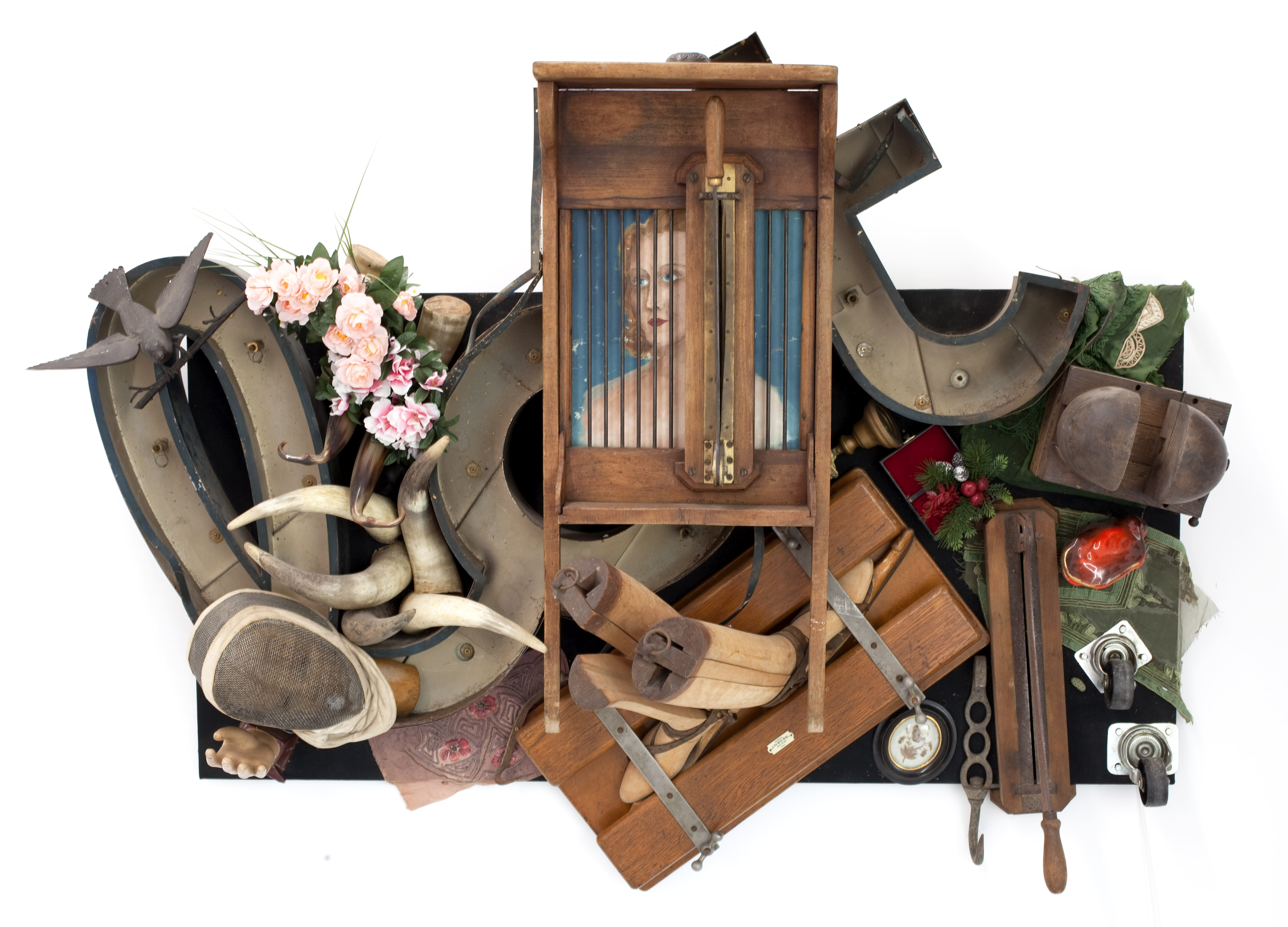 Daniel Spoerri, Corps en morceaux: Frau hinter Gittern. Assemblage 1993. 185 x 132 x 50 cm. Obj. Id. 74012 |
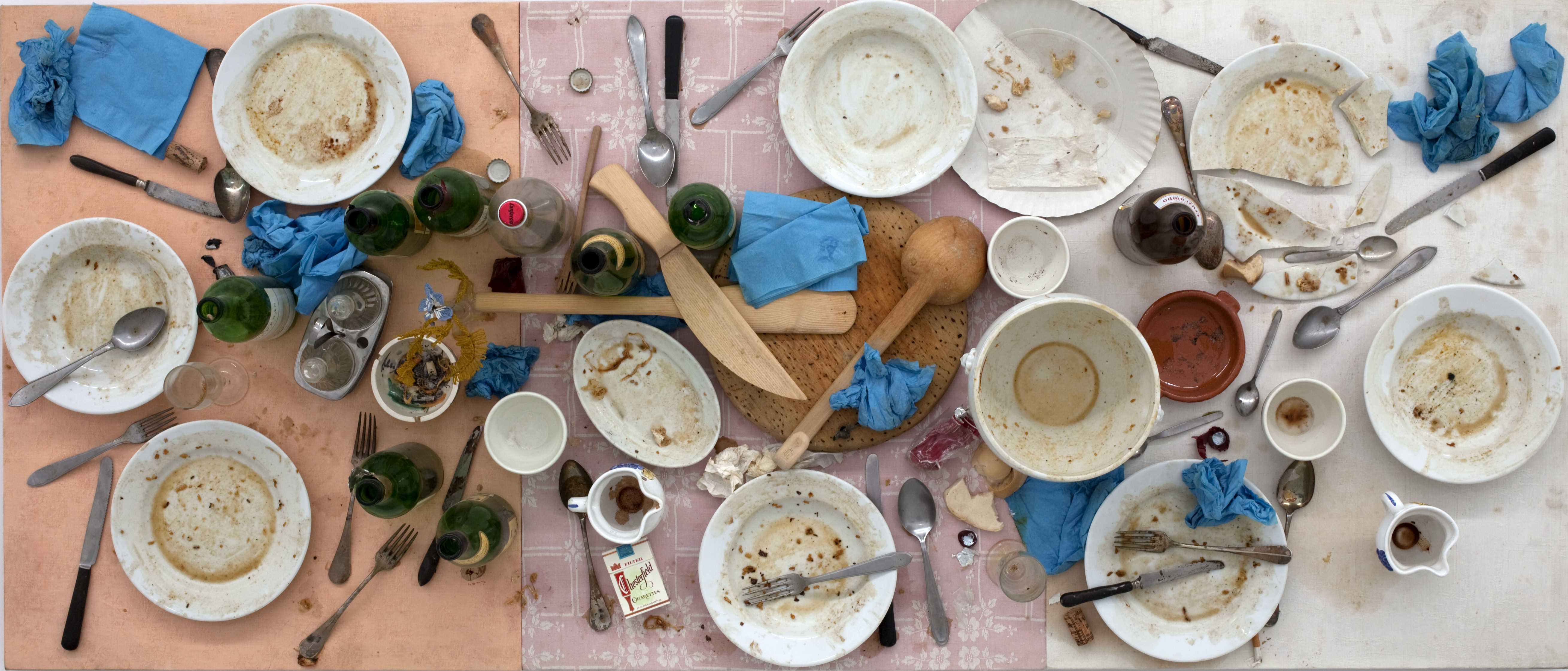 Daniel Spoerri, Sevilla-Serie Nr. 29 - Schweizer Tessinergeschirr. Assemblage 1991. 80 x 186 x 40 cm. |
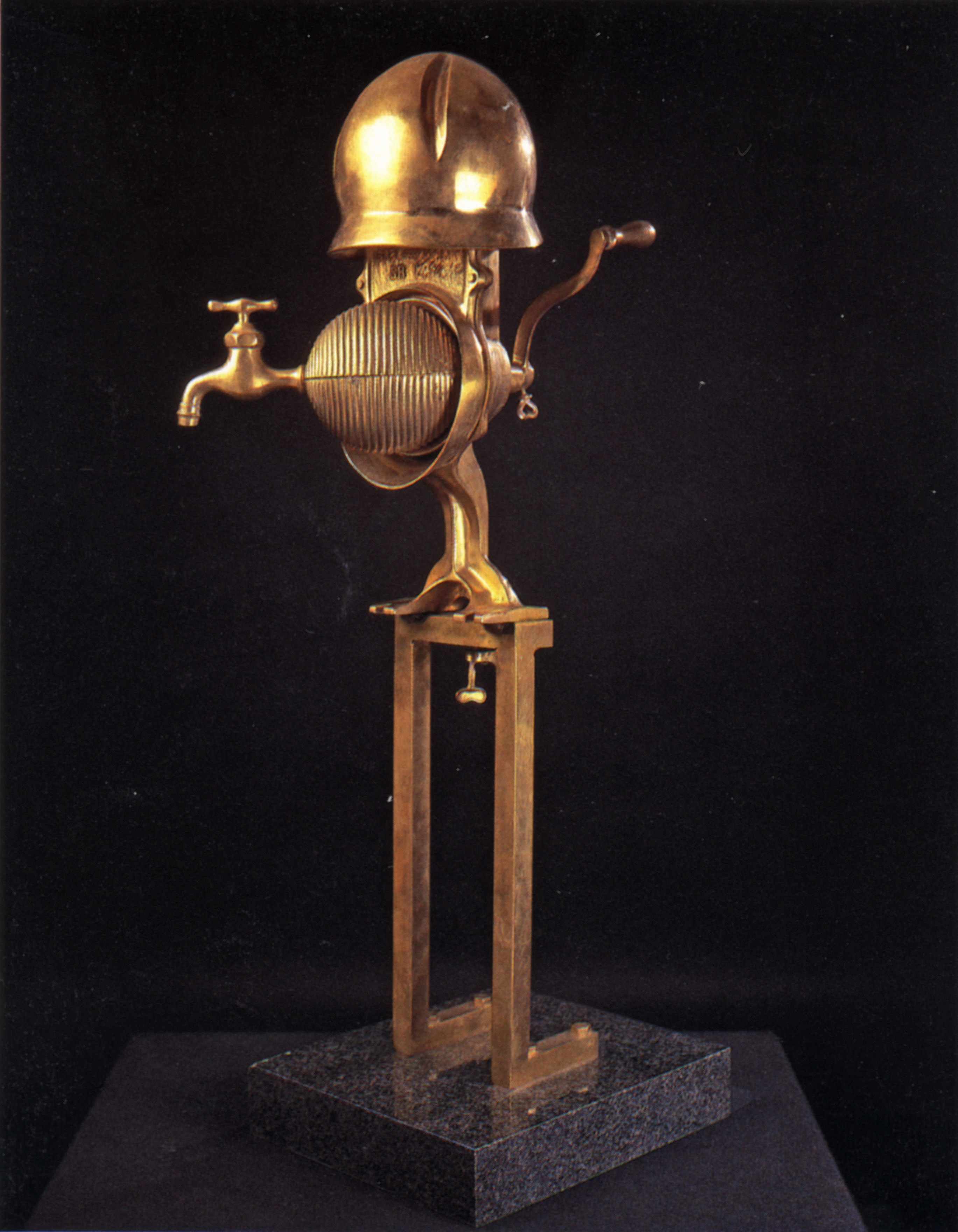 Daniel Spoerri, Krieger der Nacht Bronze poliert 1982. Höhe 90 - 140 cm. |
Opening :
Saturday, 21st May 2016, 2.00 pm – 6.00 pm



 Daniel Spoerri |
 Jürgen Brodwolf |
mpefm
SWITZERLAN art press release
opening times: Tues. – Fri. 10 – 12 am and 2 – 6 pm, Sat. 10 am – 4 pm
opening times: Tues. – Fri. 10 – 12 am and 2 – 6 pm, Sat. 10 am – 4 pm







